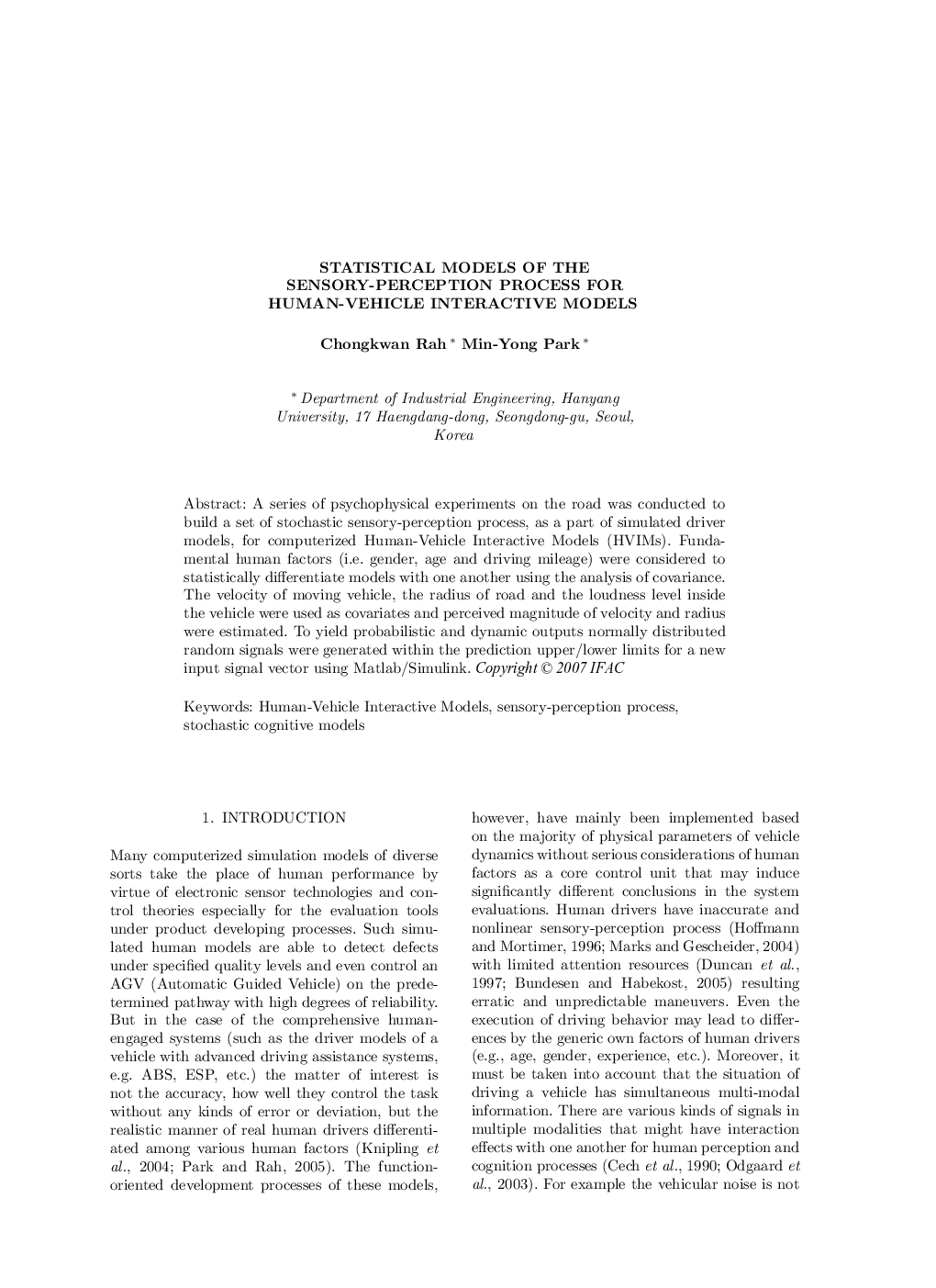| Article ID | Journal | Published Year | Pages | File Type |
|---|---|---|---|---|
| 723277 | IFAC Proceedings Volumes | 2007 | 5 Pages |
A series of psychophysical experiments on the road was conducted to build a set of stochastic sensory-perception process, as a part of simulated driver models, for computerized Human-Vehicle Interactive Models (HVIMs). Fundamental human factors (i.e. gender, age and driving mileage) were considered to statistically differentiate models with one another using the analysis of covariance. The velocity of moving vehicle, the radius of road and the loudness level inside the vehicle were used as covariates and perceived magnitude of velocity and radius were estimated. To yield probabilistic and dynamic outputs normally distributed random signals were generated within the prediction upper/lower limits for a new input signal vector using Matlab/Simulink.
